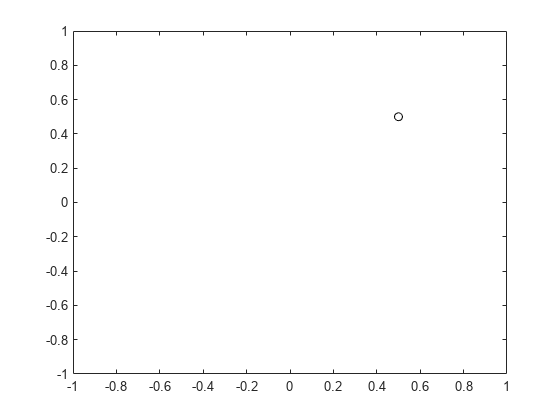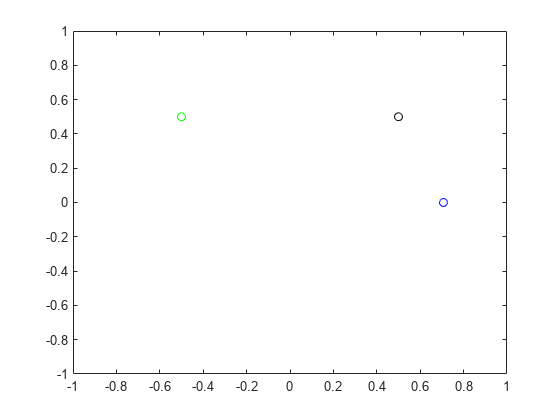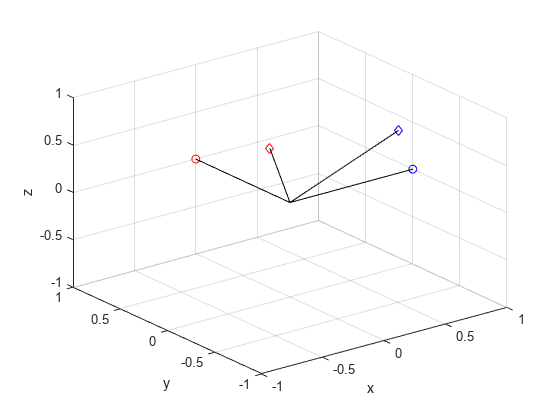rotateframe
쿼터니언 프레임 회전
설명
rotationResult = rotateframe(quat,cartesianPoints)quat를 사용하여 카테시안 점의 기준 프레임을 회전시킵니다. 쿼터니언의 요소는 회전에 사용되기 전에 정규화됩니다.

예제
입력 인수
출력 인수
알고리즘
쿼터니언 프레임 회전은 R3에 지정된 점을 아래의 지정된 쿼터니언에 따라 원래의 기준 프레임을 회전시킨 프레임에 재정의합니다.
여기서 q는 쿼터니언이고, *는 켤레를 나타냅니다. u는 회전할 점으로, 쿼터니언으로 지정됩니다.
편의를 위해 rotateframe 함수는 R3의 점을 받고 R3으로 점을 반환합니다. 다음과 같이 임의의 쿼터니언 q = a + bi + cj + dk 및 임의의 좌표 [x,y,z]를 갖는 함수 호출이 주어지는 경우,
point = [x,y,z]; rereferencedPoint = rotateframe(q,point)
rotateframe 함수는 다음 연산을 수행합니다.
점 [x,y,z]를 쿼터니언으로 변환합니다.
쿼터니언 q를 정규화합니다.
회전을 적용합니다.
쿼터니언 출력값 vq를 다시 R3으로 변환합니다.
확장 기능
버전 내역
R2019b에 개발됨


